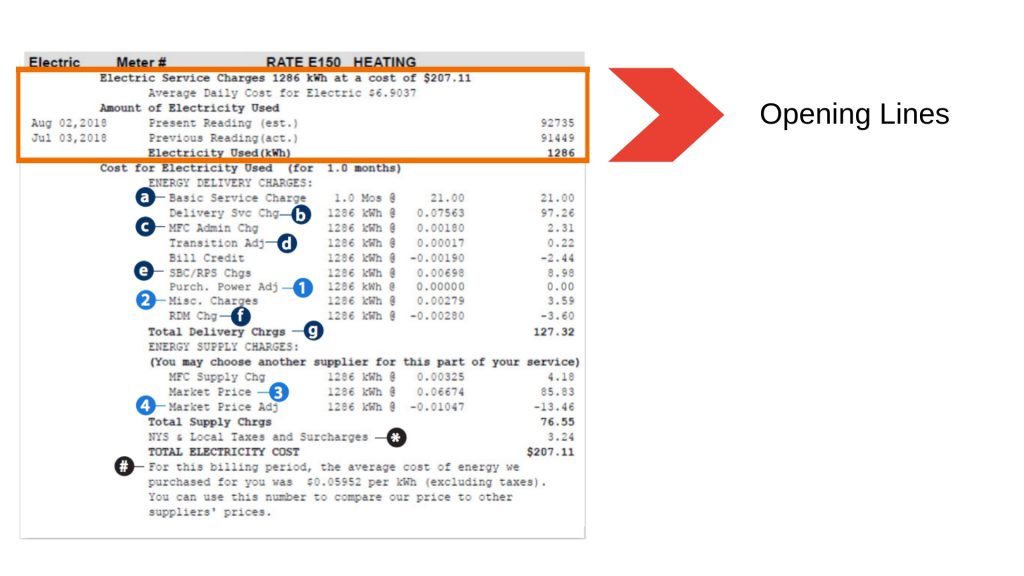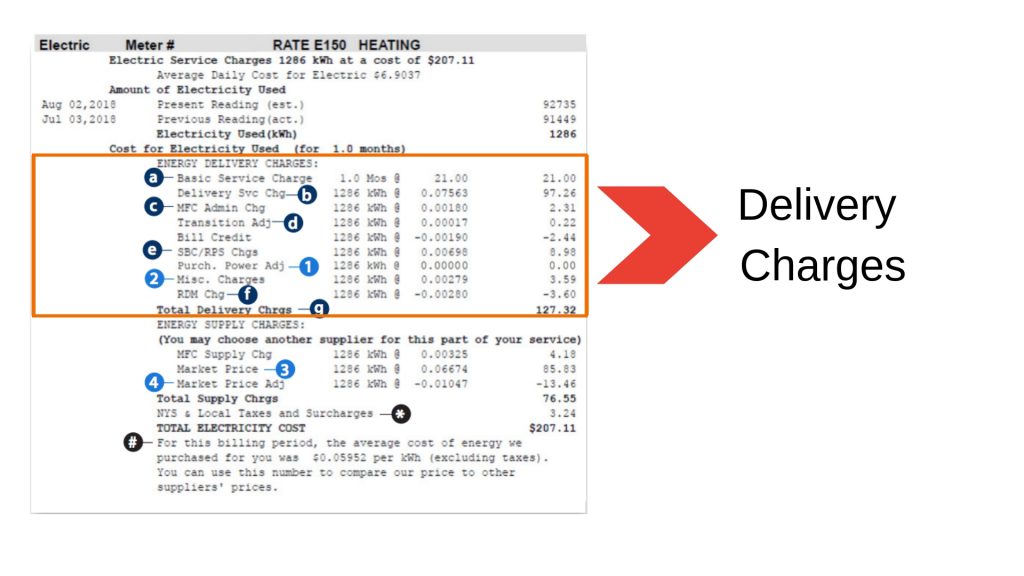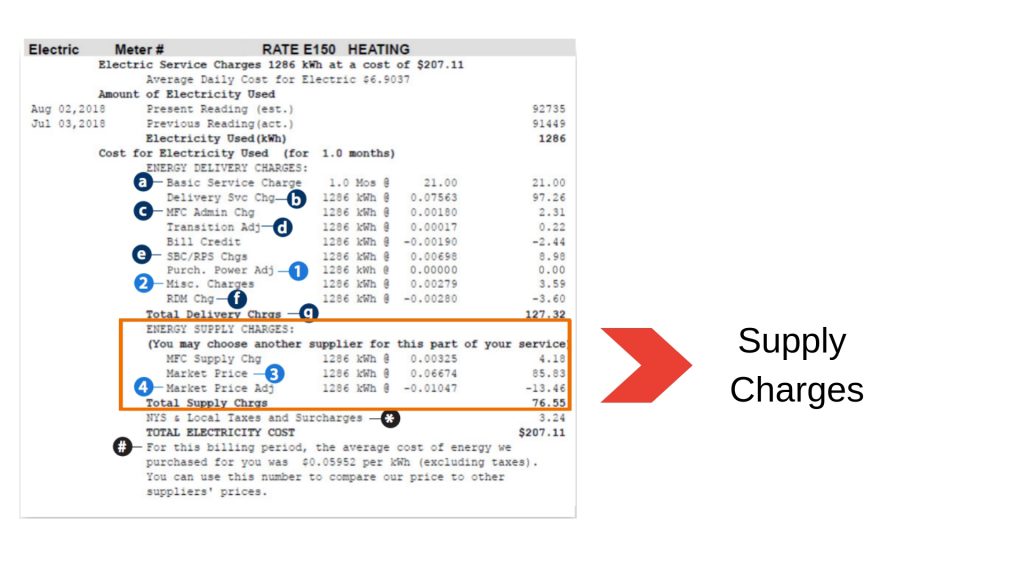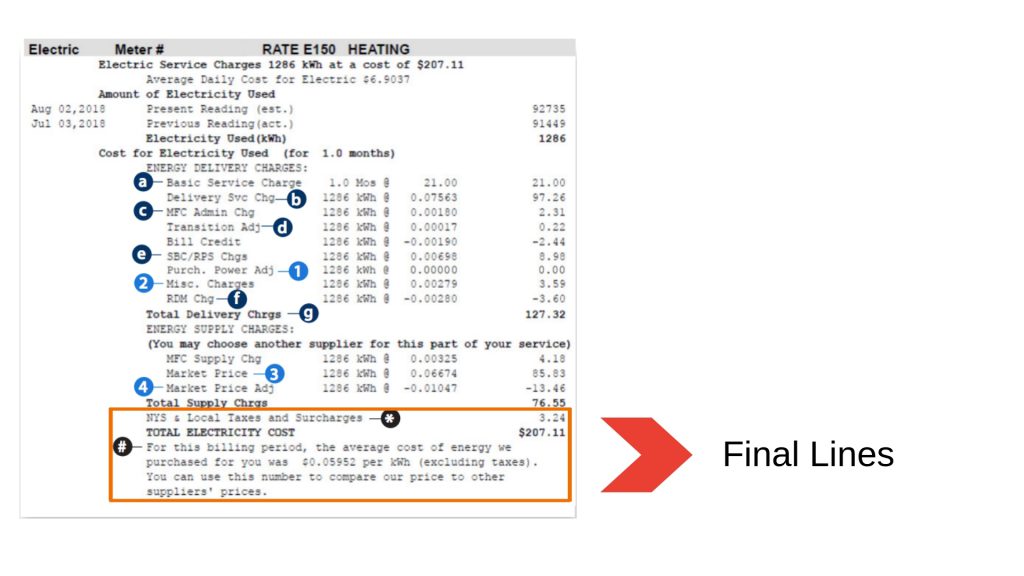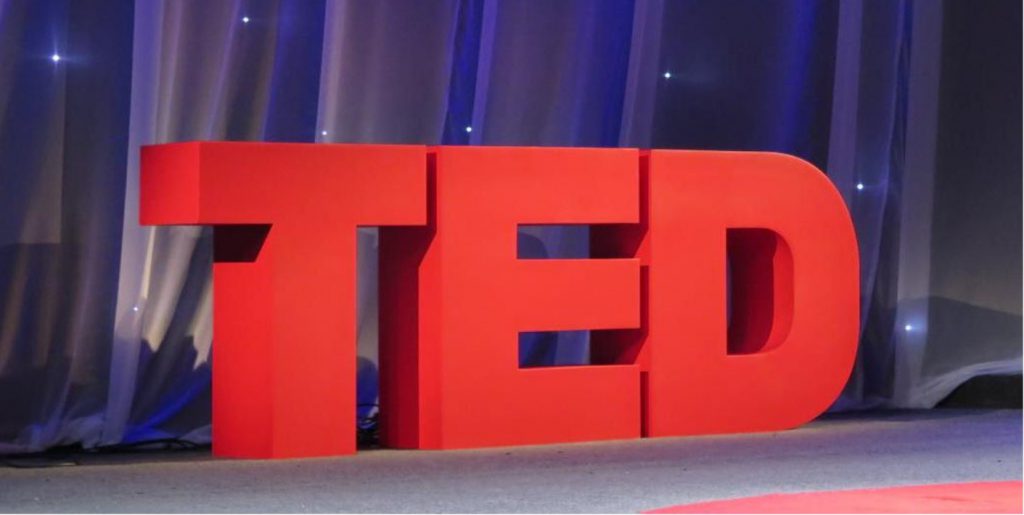The average Central Hudson customer spends about $1,400 a year on electricity, and most aren’t sure where it’s all going. We lay out in plain English what all the charges on your Central Hudson bill mean and how to maximize your savings.
Table of Contents
When you pay your electric bill month after month, you start to notice how much of a dent that can take out of your bank account. It can feel frustrating, paying so much every month for something you need, with very little option to buy and own it for yourself.
At the very least, everyone deserves to know where their money is going when they pay their bill. Even better is knowing how to save money on power to spend on other important parts of your life. We hope this article can help you with both!
Two months ago we demystified an Orange & Rockland bill with a few handy savings tips. Today, we’re doing the same for customers of Central Hudson.
Central Hudson Bill: The Opening Lines
The first lines of a Central Hudson electric bill are some of the simplest, but also some of the most crucial.
Electric service charges
Consider this a summary of the two most important numbers on your bill: your total energy use for the month and the total cost of that power. The first is measured in kWh, short for kilowatt-hours.* The second multiplies your energy use by Central Hudson’s monthly rate. For more information about how a utility sets its monthly rate, click this link.
Your electric rate and energy use are by far the most impactful pieces of your bill. As we’ll discuss at the end of this piece, the two best ways to bring down your bills revolve around lowering your rate and your energy usage.
*A kilowatt-hour is the equivalent of using one kilowatt of electricity for a total of one hour. To give an idea of how much a kilowatt is: a typical window AC unit is about 750 watts (0.75kW), a ceiling fan is about 65 watts, and a TV generally falls between 120-200 watts. So running your TV for 5-8 hours will use about 1 kWh of power.
Amount of Electricity Used
Like the last, this section is pleasantly simple. It lists your most recent reading, the one before that, and the difference between the two, which is the amount of energy you’re being billed for this month. The interesting piece comes from the little abbreviations next to your readings: either “est.” or “act.”
These stand for “estimated” and “actual,” and they tell you whether your recent readings were actually read from your meter by an employee of Central Hudson or estimated as a best guess based on your past electric use. Central Hudson uses estimated bills because they can’t get to every household’s meter every month, which means you can end up paying for electricity you actually didn’t use that month.
Savings Tip #1: Request actual readings instead of estimated readings from your utility. We wrote about estimated readings for NYSEG customers, but all the same principles apply to customers of Central Hudson.
Cost for Electricity Used
Since electric delivery and electric supply are actually very different processes (so different that you can choose a different company to do your supply from the one that delivers your power), your “cost for electricity used” is split into delivery costs and supply costs.
Central Hudson gives explanations for each component of your bill on its website, so we’ll always show Central Hudson’s summary first. We’ll follow those up with our own explanations, which we think do a little more to clear up what can be a pretty technical-sounding set of charges.
Delivery costs
Basic service charge
CHGE explanation: Includes maintenance of electric lines, meter reading, and other costs.
If you’re looking for answers, few things are more frustrating than the words “and other costs.” That could mean anything, from new power lines to employee birthday lunches.
In this case, “other costs” means the standard costs that come with billing customers and managing accounts. Simply by becoming a customer of the utility grid, even if you don’t use a penny’s worth of electricity, you’re asking the utility to set up basic service for you so that, at a moment’s notice, you could get power if you wanted it. That’s why every utility in the country has a basic service charge. If you’re wondering, Central Hudson’s basic service charge is $1 more expensive than Orange & Rockland’s. Does that matter much when you consider how much lower Central Hudson’s average bills are compared to O&R? Not really. But it’s a fun fact.
Delivery service charge
CHGE explanation: The cost to deliver electricity to customers, whether purchased from Central Hudson or another supplier.
To calculate this charge, Central Hudson multiplies the amount of energy you used last month by the rate they’ve established to deliver 1kWh of power to your home. They calculate that rate to cover the costs of all the power lines, generators, and such that they use to transmit electricity to you. As we mentioned earlier: if you want to dive deeper into how your electric rates are set, we’ve got a blog post for you. If that sounds more boring than watching paint dry, keep on scrolling!
MFC Admin Chg
CHGE explanation: This merchant function charge reflects the cost incurred when independent marketers bill through Central Hudson’s billing system. Customers receiving a separate bill avoid this charge.
By “independent marketers,” Central Hudson means alternative energy suppliers, like ESCOs, that you can sign up with to supply your energy. Central Hudson has to take on a small extra burden to make sure they bill ESCO customers correctly, and that gets reflected here.
If you’re signed up with an ESCO and get a separate bill from that company for your supply, you don’t receive this charge. Instead, you pay two bills every month.
Bill credit
CHGE explanation: The Electric Bill Credit (EBC)/Gas Bill Credit (GBC) is designed to return to customers the electric/gas regulatory liability remaining after the offset of the various electric deferred balances as of June 30, 2015 pursuant to the Order in case 14-E-0318.
This explanation feels a little like a movie scene in which the teacher is drawling on at the front of a class. Don’t worry–you’re not expected to know about case 14-E-0318.
The quick summary: In 2015, the Public Service Commission approved rate increases for Central Hudson customers over the next few years. To soften those rate increases, it also approved a small bill credit on customers’ bills. Now, you get a little added refund every month!
SBC/RPS Charges
CHGE explanation: Mandated by the state, this charge is to fund a number of initiatives, including energy efficiency programs, assistance for low-income customers, energy research & development, and also to encourage the use of renewable energy sources.
Central Hudson did a good job here. This charge has two parts: the system benefits charge (SBC), which covers energy efficiency projects across the grid, and the renewable portfolio standard (RPS) charge, which helps the utility transition to cleaner energy. This one is especially relevant in New York, which is aiming for 100% carbon-free electricity by 2040.
These small charges are probably the most worthwhile on the entire bill per dollar spent.
First, while the transition to a clean energy-powered grid creates some extra costs now, it’s going to bring down everyone’s bills substantially overall (not to mention the larger benefits to public health!)
Savings Tip #2: Central Hudson is one of hundreds of utilities across the U.S. putting great new energy efficiency programs in place, and if you take advantage, you can save a lot more money than this little charge is costing you. Here are a couple of great programs Central Hudson offers to qualifying customers:
- Heating, ventilation, and air conditioning upgrades that help your home use less energy.
- Appliance recycling, through which you can earn money by recycling your appliances.
- Lighting upgrades that can eliminate most of the energy you use to light up your home.
Purch. Power Adj
CHGE explanation: Usually a credit, this item reflects the long-term power purchase agreements that have been negotiated between Central Hudson and the new owners of its former power plants.
Back in the day, Central Hudson owned all the power plants supplying electricity in the area. Now, some of those plants have new owners, from whom the utility purchases power and integrates that power into its delivery pipeline. These contracts are aptly called “power purchase agreements.” In short: if any costs change with regard to these agreements, the utility can pass charges or refunds along to customers.
Miscellaneous charges
CHGE explanation: Credits and charges related to transactions with, for example, the grid operator. For non-demand customers also includes costs associated with the Company’s Targeted Demand Response Program, the Company’s Distributed System Implementation Plan, the costs associated with certain elements of Value Stack Compensation related to the purchase of generation, and the Company’s Commercial System Relief Program.
Slow down. That’s a lot of programs very few people have heard of grouped under the most vague title ever.
What Central Hudson is trying to tell you is that there are 1,000 things that can affect how expensive it is to bring you electricity, and if they tried to put them all on your bill they’d be mailing you something the size of Grapes of Wrath. So they lump a bunch of them under “miscellaneous.”
The theme that ties these items together is reliability. By working closely with the grid operator and offering these programs, which give savings in exchange for using energy at off-peak hours, Central Hudson makes sure the grid doesn’t get overrun with demand. That way, your energy gets to you right on time.
RDM charge
CHGE explanation: a mechanism intended to minimize the impact to Central Hudson resulting from reduced energy consumption as efficiency programs are implemented.
True, but oversimplified. This one has to do with evening out the utility’s profits to keep it operational.
Utilities are monopolies, but they’re heavily regulated monopolies, and they aren’t allowed to earn exorbitant profits. In fact, their allowable profits are set in advance by state regulatory agencies like the Public Service Commission. They set their rates to meet those profit targets. As time goes on, they either exceed their set profits, in which case the RDM (which stands for revenue decoupling mechanism) charge comes as a refund to customers, or they fail to meet them, in which case the RDM comes up as a charge.
Total delivery charges
CHGE explanation: The total cost to deliver electricity for all customers, whether purchasing energy from Central Hudson or an independent supplier. Includes Basic Service Charge.
Central Hudson’s explanation gets a thumbs up from us.
Supply Costs
MFC Supply Charge
CHGE explanation: “The Merchant Function Charge (MFC) is designed to reflect the costs the Company incurs associated with the procurement and provision of electricity supplies. The MFC includes cost-based components to represent commodity-related advertising and promotions, and related Administrative and General expenses and rate base items allocated to each component.”
Yikes. We give this explanation a 1/10 for readability.
We already covered the MFC Admin charge, which is essentially the demand-side version of the MFC supply charge. That one covered various administrative costs of delivering electricity to customers, and this one covers the administrative costs (staff, equipment, etc.) of buying it in the first place from ESCOs. If you get your power from an ESCO, you’ll avoid this charge.
Market Price
CHGE explanation: The average wholesale price of all energy required to meet the needs of Central Hudson’s full service customers (those who purchase supply from Central Hudson, as well as delivery).
It’s almost as simple as that. Central Hudson actually estimates this price based on all its data on past energy costs and current trends, since its generation and purchase of energy doesn’t perfectly line up with its billing cycle. Of course, Central Hudson’s guesses aren’t totally perfect. That’s where the next item comes into play.
Market Price Adj
CHGE explanation: An adjustment — either plus or minus — of the previous month’s market price of energy to reflect any differences caused by the timing of billing and collection.
Like we touched on just a moment ago, this adjustment corrects for any discrepancies between Central Hudson’s estimate of the market price and the actual price they ended up with after all was said and done.
Total supply charges
Add up all those supply charges and you’ve got your total!
Final Lines of Your Central Hudson Bill
NYS & Local Taxes and Surcharges
CHGE explanation: Taxes and surcharges imposed by the State of New York and local authorities, to be collected from all customers.
As Ben Franklin, one of the earliest and most prominent thinkers on electricity himself, said: “I this world nothing can be said to be certain except death and taxes.” Still true today.
Total electricity cost
The sum of your delivery and supply charges
For this billing period:
CHGE explanation: This last paragraph indicates your average price of electricity per kWh for the billing period, exclusive of taxes and delivery charges. This price can be used to compare other suppliers’ electricity offers.
Central Hudson offers this little note at the bottom of your bill to make it easy to compare your monthly rate to the offerings of an ESCO. For all you folks out there looking to shop around, this is the rate you’ll want to use to compare. Just remember: if you’re going to switch suppliers based on rates, don’t fall prey to escalating costs!
Best Tips for Saving on Your Central Hudson Bill
The best ways to save on your Central Hudson electric bill are to either:
- Reduce your energy use, or
- Reduce your electric rate.
The good news is there are plenty of ways to do both of these things! Making your home more energy-efficient is a great way to make the most of your power and bring down your overall energy use. And being energy-efficient doesn’t have to mean transforming your home. You can do incredibly simple things, like procrastinating on your laundry or adjusting your thermostat when you go to work, to save hundreds of dollars.
If you want to reduce your rate, you’ve got choices. One option is to join a program through Central Hudson, like a time-of-use rate program, that allows you to pay a different price for your power at certain times of day. If you can use more of your power when prices are lowest, you can save money.
Alternatively, you can opt for clean energy and save without changing a thing about your schedule! Putting solar panels on your roof could bring your bill all the way down to 0. If you can’t do rooftop solar right now, you can take part in a local shared solar farm with your Central Hudson neighbors and enjoy 10% off your bill each month.
Central Hudson Has Community-Shared Solar
It’s free to join, and it’s the best way to bring clean energy to the local area.
Learn More

